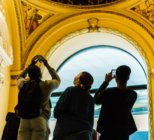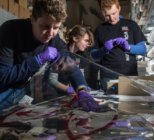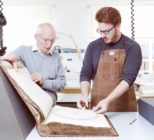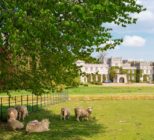One key strand of the Socially Engaged course will explore how museums adequately and appropriately represent people from a range of backgrounds and communities and also thinks about how museums can be active in the fight for equality and diversity.
As museums are continually pursuing socially engaged approaches, the course will examine the role of museums and practitioners in shaping society’s understandings of contemporary issues, upholding values of inclusivity and accessibility, and ensuring that museums benefit their communities.
Based on 15 years of study by the Research Centre for Museums and Galleries (RCMG) at Leicester, the course draws on broader global shifts in practice and will focus on the socially-driven professional practice and challenge students to think deeply about the role of culture in society and the characteristics of socially purposeful museums and galleries.
What are the main aims and objectives of the Socially Engaged Practice in Museums and Galleries course?
The main aim of the Socially Engaged Practice in Museums and Galleries course is to inspire people to think of the museum as a place that can effect positive social change, have an impact upon, and be truly relevant to, 21st Century communities. It aims to offer museum professionals that are interested in this area of museum work a chance to engage with diverse academic theory and a range of inspiring case studies that relate to socially engaged museum practice. It’s an exciting and dynamic field of practice and we invite learners to join us in exploring it and taking it forward.
Students can undertake the course as a full master’s programme or dip in and out of individual modules to suit their own personal situation, building up to a postgraduate certificate, diploma or master’s degree over time if they wish. By delivering the course on a new, social learning platform we hope to create ongoing dialogue between existing and aspiring museums professionals who believe in the power of museums to have a positive impact on society.
How will the course contribute to the museum sector by providing more in-tune graduates (that learn about social justice and human rights, learning and education in the museum)?
The course will support the museum sector by helping museum professionals understand how and why museums can and should contribute to contemporary social issues, and how this can be a core part of the museum’s function. Through both academic content, plentiful case-studies and diverse perspectives from within and beyond the sector, students will explore issues of representation and co-production, socially engaged learning and how the museum can engage with issues of social justice and human rights. They will also explore how effective research and evaluation can support the museum to explore these issues further and enable them to engage effectively. Graduates of this programme will understand how they can identify relevant issues in their own working contexts, and consider how they and their institutions might be able to positively engage with such issues to make positive differences to people’s lives.
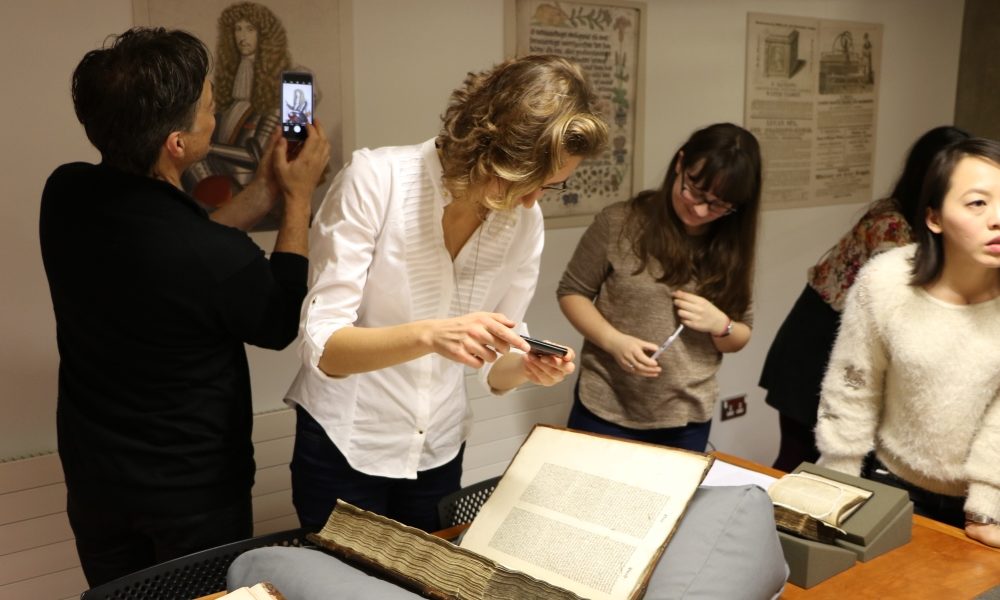
What do you mean when you talk about a socially impactful museum and is this a necessary goal for today’s cultural organisations?
When we talk about the socially impactful museum, we mean an institution that doesn’t see itself as an island separate from the communities it serves, but understands the issues that affect people’s everyday lives – and takes a stand on them. The socially purposeful museum does not try to be neutral or impartial, but seeks to use its collections, education work and other resources to positively impact upon people’s lives. This is not something new for museums, it harks back to the founding principles many of our great museums that were set up to respond to social and educational needs. The approach may be different today, but we firmly believe that museums can engage with its communities on many levels to improve people’s lives in many ways.
It is absolutely a necessary goal for today’s cultural institutions. We only have to look around at what is going on in the world today to understand that urgent need to fight for social justice and human rights, for example. Recently we have learned that hate crime in the UK has dramatically risen since the EU Referendum vote last summer. There are a great many worrying stories coming from America in the wake of Trump’s election as president. Health inequality is growing. This week we saw a journalist respond to a project that aims to explore LGBTQ stories in heritage sites by talking about ‘pinko shirtlifters’. These are not isolated examples. While legal protections (in this country) are advancing for people from discriminated groups, the lived experiences of, for example, disabled people, women, members of the LGBTQ community (and others) often tell a different story. Museums cannot see themselves as somehow separate and distinct from these issues. To try and remain neutral in the face of issues like these can only serve to make the museum complicit in ongoing discrimination and social injustice.
What will be the benefits of the Project in Practice segment of the course, which gives students the chance to work with both academic tutors and leading museum professionals in a real museum or gallery project relating to their studies?
This module will support students to engage with not only academics and tutors, but also with museum or gallery professionals who are at the cutting edge of socially purposeful museum and gallery work. It gives students a chance to develop expertise in a specific area of socially engaged practice by working on a ‘real-world’ scenario, using the academic theory they have learned, whilst also considering the realities and limitations often faced by museum and gallery practitioners. The projects students undertake may be projects devised by their mentors, but may also relate to their own museum and gallery practice, giving students a unique opportunity be mentored through their own projects by both experienced professionals and academic tutors.

In what ways can this secure a more diverse workforce?
Here at the School of Museum Studies we are deeply committed to equality and diversity. However, we are aware that our student body is not representative of the population in the same way that the museum workforce in the UK was highlighted as being unrepresentative of the population at large by the MA’s recent ‘Valuing Diversity’ report. Museums can only be truly representative of their communities when the museum workforce is also representative of those communities.
One of the ways we can address underrepresentation and help to secure a more diverse workforce is to understand the barriers faced by people from communities which are underrepresented in the museum workforce in the UK. We know that one of these barriers is financial, which is why we have chosen to make scholarships available. We launched our new Diversity Scholarships scheme last year to coincide with the School’s 50th Anniversary. Applicants are welcome from people from a range of different backgrounds (including people who identify as BME, people from lower socio-economic groups, people with disabilities, carers, care-leavers). The scheme continues this year and is currently open for applicants wishing to start studying with us this autumn.
This focus on diversity is not new for the School. We were a founding partner of the MA’s diversify scheme 1998 and equality and diversity is a key strand of our teaching and research here in the department, which is recognised for its approach to gender equality with an Athena Swann award and is currently undertaken extensive research in partnership with the Equality Challenge Unit to further understand and address the barriers to accessing our courses and a career in the museums sector for people from black and minority ethnic backgrounds.
What will be the benefits of having a more diverse student body and subsequently museum workforce?<
Museums can only be truly representative of the communities they serve (and the communities that fund them) when they have workforces that are also representative of those communities. We hope, through our diversity initiatives, to contribute to a more diverse museum workforce, which, in turn, will lead to a museum sector that is more relevant and accessible to people from communities that have often been excluded from museums through lack of representation in the workforce (or, indeed, in the displays and collections). Museums can have a positive impact on people’s lives and people, from whatever background, should be able to benefit. We believe that diversification of the museum workforce will enable more people to do so.
What is the school’s relationship with the Equality Challenge Unit and how is that helping with diversifying the student body?
The School is currently working with the ECU in two ways:
We are working with the ECU on a project that will help us understand and address barriers faced by people from black and minority ethnic communities in studying with us. We are part of a nationwide partnership involving a number of other universities and subject disciplines looking at a range of barriers faced by people of different backgrounds and from different communities. These partnerships, supported and facilitated by the ECU will give us a broad understanding of a great many issues faced by prospective students. We are currently in the research phase of the project and are looking forward to developing an action plan that, we hope, will make our courses more accessible to a broader range of people. Our Diversity Scholarships form part of this new approach and we look forward to implementing further new initiatives soon.
We are also the proud holders of a bronze Athena Swan award for our approach to gender equality in the School and are currently in the process of applying for a silver award.
We are always pursuing ways to ensure everything we do supports equality for all. The introduction of gender neutral toilets – the first in the University – just this week offers an example of how we work to ensure that everyone is welcome here, everyone is respected and everyone is supported to develop and learn in ways that suit their needs.
How important is it for the school to represent the needs and desires of the museum sector such as striving for a socially aware, more diverse and inclusive workforce?
It is critical that we, as a School, represent the needs and desires of the museum sector in everything that we do. The School has done this since its founding in 1966 and has adapted and evolved over more than 50 years with the museum sector. The new Socially Engaged Practice courses perhaps heralds the latest stage in this evolution in terms of supporting museums to explore contemporary social issues in a way that is demanded more by today’s society. It is perhaps important to note at this point that we do not see ourselves as distinct from the museum sector, but an integral part of it that can support its development through research and education, and by working in partnership with a great many museums and galleries both here in the UK and abroad.
How do you make sure that the intake, while encouraging diversity, is still fair to all?
We do not discriminate at the point of application. We have a clear set of entry requirements that all students must meet in order to gain entry to our courses. Our aim, through our diversity initiatives, is to encourage more people from diverse background to apply for courses and consider and pursue careers in the museum sector.
What is the current percentage of BAME students at the school and what targets have you set for the future?
Our data shows that the use of positive action over the past years has helped to increase the numbers of BME students on our programmes but we all have much more to do to achieve a workforce and student body that fully represents our communities.


